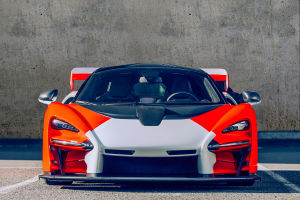Motorcycles are complex machines that consist of many different components and systems.
Understanding the composition and structure of motorcycles is essential for anyone who wants to own, operate, or build a bike.
Now, let's get together to learn about the different components and systems of a motorcycle and discuss their function and importance.
1. Frame:
The frame is the backbone of the motorcycle and provides the structural support for all the other components.
Frames are typically made from steel or aluminum and come in a variety of shapes and styles. The design and construction of the frame are crucial to the handling and stability of the motorcycle.
2. Engine:
The engine is the heart of the motorcycle and provides the power that propels the bike forward. Engines can be either two-stroke or four-stroke and come in a variety of sizes and configurations.
3. Transmission:
The transmission is responsible for transferring power from the engine to the rear wheel.
Most motorcycles use a manual transmission, which requires the rider to shift gears using a foot lever and a hand lever.
Some motorcycles use an automatic transmission, which shifts gears automatically without the need for manual input.
4. Wheels:
The wheels of a motorcycle are typically made from aluminum or steel and are fitted with rubber tires.
Understanding the composition and structure of motorcycles is essential for anyone who wants to own, operate, or build a bike.
5. Suspension:
The suspension of a motorcycle is responsible for absorbing shocks and vibrations and providing a smooth ride.
Most motorcycles use a combination of front and rear suspension systems, which typically consist of a fork and shock absorbers.
6. Brakes:
The brakes of a motorcycle are responsible for slowing or stopping the bike. Most motorcycles use a combination of front and rear disc brakes, which are operated by hand levers on the handlebars. Some motorcycles also use a rear drum brake, which is operated by a foot pedal.
7. Electrical System:
The electrical system of a motorcycle is responsible for providing power to the lights, ignition, and other electrical components.
The system includes a battery, alternator, and various wiring and switches. The electrical system is essential for the proper operation of the bike and requires regular maintenance and inspection.
8. Fuel System:
The fuel system of a motorcycle is responsible for delivering fuel to the engine.
Most motorcycles use a carburetor or fuel injection system, which regulates the amount of fuel that is delivered to the engine.
In conclusion, the composition and structure of motorcycles are complex and multifaceted.
From the frame and engine to the wheels and brakes, every component of a motorcycle plays a crucial role in the performance and functionality of the bike.
With proper maintenance and care, a well-built motorcycle can provide years of enjoyment and reliable transportation.


